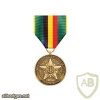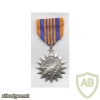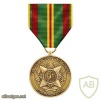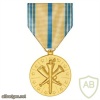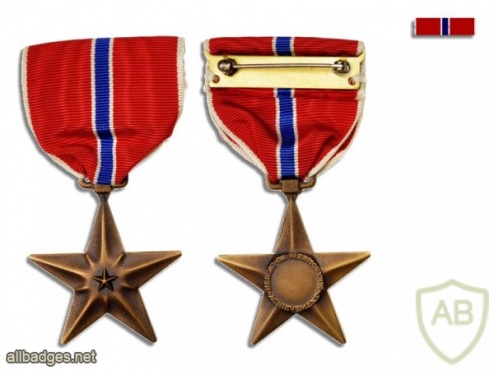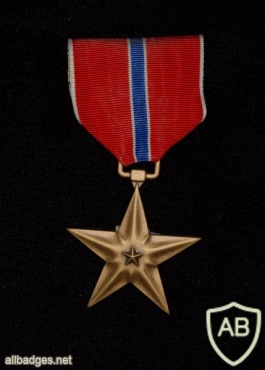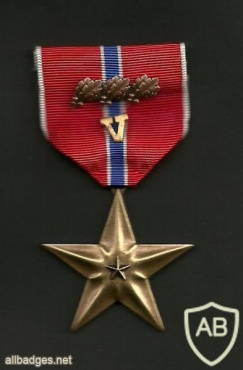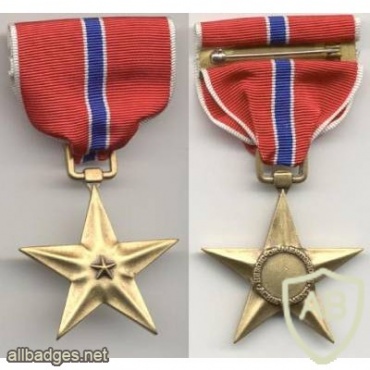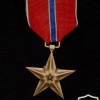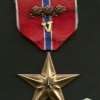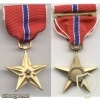Bronze Star Medal
The Bronze Star Medal was established by Executive Order 9419, 4 February 1944 (superseded by Executive Order 11046, 24 August 1962, as amended by Executive Order 13286, 28 February 2003). The Bronze Star Medal may be awarded by the Secretary of a military department or the Secretary of Homeland Security with regard to the Coast Guard when not operating as a service in the Navy, or by such military commanders, or other appropriate officers as the Secretary concerned may designate, to any person who, while serving in any capacity in or with the Army, Navy, Marine Corps, Air Force, or Coast Guard of the United States, after 6 December 1941, distinguishes, or has distinguished, herself or himself by heroic or meritorious achievement or service, not involving participation in aerial flight—
(a) while engaged in an action against an enemy of the United States;
(b) while engaged in military operations involving conflict with an opposing foreign force; or
(c) while serving with friendly foreign forces engaged in an armed conflict against an opposing armed force in which the United States is not a belligerent party.
The acts of heroism are of a lesser degree than required for the award of the Silver Star. The acts of merit or acts of valor must be less than that required for the Legion of Merit but must nevertheless have been meritorious and accomplished with distinction. The Bronze Star Medal is awarded only to service members in combat zones who are receiving imminent danger pay.
The Bronze Star Medal was designed by Rudolf Freund (1878–1960) of the jewelry firm Bailey, Banks & Biddle.[7] (Freund also designed the Silver Star.)
The medal is a bronze star 1 1⁄2 inches (38 mm) in circumscribing diameter. In the center is a 3⁄16 inch (4.8 mm) diameter superimposed bronze star, the center line of all rays of both stars coinciding. The reverse bears the inscription "HEROIC OR MERITORIOUS ACHIEVEMENT" with a space for the name of the recipient to be engraved. The star hangs from its ribbon by a rectangular metal loop with rounded corners. The suspension ribbon is 1 3⁄8 inches (35 mm) wide and consists of the following stripes: 1⁄32 inch (0.79 mm) white 67101; 9⁄16 inch (14 mm) scarlet 67111; 1⁄32 inch (0.79 mm) white; center stripe 1⁄8 inch (3.2 mm) ultramarine blue 67118; 1⁄32 inch (0.79 mm) white; 9⁄16 inch (14 mm) scarlet; and 1⁄32 inch (0.79 mm) white.
Whenever the medal is awarded by the Army and Air Force for acts of valor in combat, the "V" Device is authorized for wear on the medal and whenever the medal is awarded by the Navy, Marine Corps, and Coast Guard for acts of valor or meritorious service in combat, the Combat "V" is authorized for wear on the medal.


